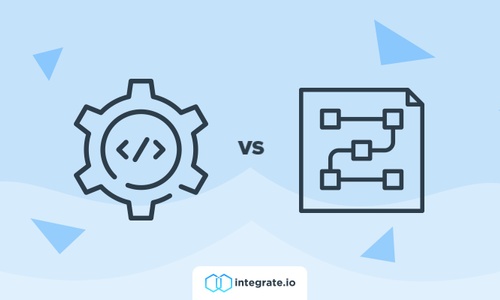You probably want to know about ETL vs ESB because you need to understand the pros and cons of each data integration option. There isn’t a one-size-fits-all solution. Learning more about ETL and ESB will help you make the right choice, though.
Quick Comparisons of ETL vs ESB
|
ETL
|
ESB
|
|
Uses “pull” technology that follows a schedule or responds to a demand.
|
Uses “push” technology initiated by the database server.
|
|
Valid requests cannot timeout or decay while extracting, transforming, and loading data.
|
Can use queues to escalate jobs to the right person while pushing other jobs lower in the queue.
|
|
A scalable solution that can process huge batches of data simultaneously.
|
Service bus architecture prevents ESB from moving large volumes of data.
|
|
Can use ESB to integrate applications and databases.
|
Primarily used to integrate applications.
|
Should You Choose ETL or ESB?
ETL and ESB serve different functions, so you should make your decision based on what you want from your data transfer solution.
If you need to move massive amounts of data, then you want to use an ETL platform. You can think of ETL as a large truck that moves heavy data from one place to another. You wouldn’t try to move massive amounts of data in a smaller vehicle because it would take too long or damage the vehicle.
If you only need to send small amounts of data between applications, though, you will probably get the best use from an ESB solution. ESB can perform operations like delivering online ordering information from Salesforce to an invoicing feature in SAP. It doesn’t make sense to use an ETL platform for this job because ETL only moves data when told to do so and expects to move giant loads of information at a time. In this case, your ETL truck becomes an unreliable, costly way to perform a simple task.
Is There a Difference Between ESB and Microservices?
If you’re comparing ETL and ESB options, then you may also know about the benefits of microservices. Instead of choosing ESB, why not opt for microservices?
The ESB vs microservices debate often depends on what you want them to accomplish. At a quick glance, they may seem like the same thing. A closer examination shows significant differences between the two.
With ESB, multiple tasks often get delivered as a tangled group. Over time, it becomes increasingly difficult to separate the tasks requested by an ESB. Eventually, everything from requesting an invoice to notifying the consumer becomes part of the same code.
Microservices can stand alone, though. It’s possible to send one microservice request to an app. Not surprisingly, this usually changes as companies grow. Adding more microservices to interactions, however, does not mean that you must move toward ESB. With microservices, each request remains independent. You can think of it as a piece of fabric that unravels easily. Each thread would represent one microservice.
The Pros and Cons of ETL vs ESB Tools
Finally, let’s take a closer look at how you can choose the right ETL vs ESB tool for your needs.
Pros and Cons of ETL
Pros
- Move massive amounts of data quickly.
- Transform, reformat, or cleanse data to make it more valuable.
- Increase data governance to comply with CCPA and GDPR.
- Pull data from multiple locations at once.
- Load transformed data to multiple destinations.
Cons
- Perform pull requests as directed by an app.
- Transfer small amounts of data without wasting time and money.
- Initiate activities from other apps or tools.
Pros and Cons of ESB
Pros
- Communicate between apps quickly.
- Transfer small amounts of data at an affordable price.
- Initiate services from an app.
- Bundle several requests that get executed at the same time.
Cons
- Inability to move large amounts of data quickly.
- Complex commands that can are difficult to upgrade.
If you’re worried about the difficulty of upgrading, then you’ve reached the ESB vs microservices problem. The path you take will depend on whether you want your services separate or bundled.
Choosing the Right ETL Tool
An ETL tool comparison matrix can help you choose the right ETL platform for your needs. Although ETL tools have a lot of similarities, they can differ considerably from product to product.
You can find several ETL cool comparison matrices by reading posts like:
If you still have questions about what an ETL tool comparison matrix means, please schedule a call with one of our Integrate.io professionals who will answer your questions and help you choose a tool that matches your organization’s needs.











